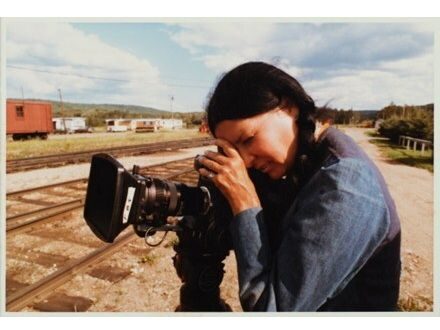Categories more
- Adventures (17)
- Arts / Collectables (15)
- Automotive (37)
- Aviation (11)
- Bath, Body, & Health (77)
- Children (6)
- Cigars / Spirits (32)
- Cuisine (16)
- Design/Architecture (22)
- Electronics (13)
- Entertainment (4)
- Event Planning (5)
- Fashion (46)
- Finance (9)
- Gifts / Misc (6)
- Home Decor (45)
- Jewelry (41)
- Pets (3)
- Philanthropy (1)
- Real Estate (16)
- Services (23)
- Sports / Golf (14)
- Vacation / Travel (60)
- Watches / Pens (15)
- Wines / Vines (24)
- Yachting / Boating (17)
Published
10/16/2024 by Musée d'art contemporain de MontréalThe Musée d'art contemporain de Montréal (MAC) and the National Film Board of Canada (NFB) are proud to unveil the MAC's brand-new exhibition, Alanis Obomsawin: The Children Have to Hear Another Story, which will be open to the public from September 26, 2024, to January 26, 2025, in the MAC's temporary space at Place Ville Marie. The exhibition dedicated to the work of Abenaki documentary filmmaker, activist, and singer Alanis Obomsawin, one of the most acclaimed Indigenous directors in the world, will be accompanied by an exclusive mural by artist Caroline Monnet: Wàbigon.
After having enjoyed great success in Berlin, Vancouver, and Toronto, The Children Have to Hear Another Story will highlight the work of Alanis Obomsawin in the heart of Montreal. Decade by decade, this retrospective provides an exhaustive panorama of her cinematographic, visual, and musical work. The exhibition looks at the motivations of the artist, who distinguished herself from a very young age with her strength and courage. The 1960s followed, a period during which she became known to the public as an artist and activist for Indigenous rights, and the subsequent decades were just as significant, showing the evolution of her trajectory and thinking.
"All my life, I have been mainly interested in education, because it is through education that we develop, that we learn hatred or love." - Alanis Obomsawin
The exhibition presents 13 of the 64 films Obomsawin made at the NFB, including her first, Christmas at Moose Factory (1971), which depicts a Cree community through the drawings and voices of its children; Kanehsatake: 270 Years of Resistance (1993), which was filmed behind the barricades during the Oka crisis; and We Can't Make the Same Mistake Twice (2016), which follows a court case First Nations representatives filed against the federal government. These films are accompanied by archival documents shedding new light on their creative process, children's drawings from Moose Factory, and masks, engravings, and monotypes by the artist.
Quotes
"It is essential to support museums and exhibitions that promote Canadians' access to heritage to learn from the past and shape the future. I am very proud that, thanks to our government's investment, the Musée d'art contemporain de Montréal highlights the work of Indigenous artist and filmmaker Alanis Obomsawin and offers visitors a unique opportunity to discover the impact of her film work over the decades." − The Honorable Pascale St-Onge, Minister of Canadian Heritage
"It is an honour and privilege for me to present this retrospective exhibition of Alanis Obomsawin in the city where she has lived and worked for 70 years. A prominent figure in our cultural, political, and social landscape, Alanis is a model and inspiration for so many Indigenous and non-Indigenous filmmakers, artists, and activists. We know her for her films; the exhibition allows us to discover the singer, the storyteller, and the depth and richness of her commitment to Indigenous people across Canada." - Lesley Johnstone, curator of the exhibition at MAC
"The NFB has been Alanis Obomsawin's creative home for nearly 60 years. This exceptional artist has been a true trailblazer whose work has led to greater recognition of Indigenous peoples, ensuring their experiences and their hopes are seen, heard, and better understood. Her documentaries have chronicled the social and cultural changes experienced by Indigenous peoples and even played a role in bringing about these important changes. Ms. Obomsawin's essential and accessible films continue to inspire new generations of filmmakers, both in Canada and around the world."- Suzanne Guèvremont, Government Film Commissioner and NFB Chairperson
Organized by Richard Hill and Hila Peleg, Alanis Obomsawin: The Children Have to Hear Another Story is made possible through a partnership between Haus der Kulturen der Welt, Berlin, Art Museum at the University of Toronto, and Vancouver Art Gallery in collaboration with the National Film Board of Canada and with the generous support of CBC/Radio-Canada and the Canada Council for the Arts. This project has been made possible in part by the Government of Canada. The exhibition at the Musée d'art contemporain de Montréal is curated by Lesley Johnstone, with Marjolaine Labelle, and has been made possible by the Government of Québec.
A Mural by Caroline Monnet
Alongside the exhibition, the MAC will unveil an exclusive mural by Caroline Monnet: Wàbigon, which means "a flower blooms" in Anishinaabemowin and which pays homage to the major influence of Alanis Obomsawin. Caroline Monnet, an artist of Anishinaabe and French origin, created a monumental photographic portrait of eight Indigenous women and a child in an enchanted forest. Pictured are Acho Dene Koe First Nation chef and artist Swaneige Bertrand with her daughter Aja-Eyal Ferron; the artist's sister, Émilie Monnet, an interdisciplinary performer; Caroline Monnet herself; the Guinean-Wendat dancer and choreographer Aïcha Bastien N'Diaye; Eeyou (Cree) writer and artist Virginia Pésémapéo Bordeleau; Atikamekw visual artist Catherine Boivin; Inuk singer-songwriter Elisapie Isaac; and Innu soprano Elisabeth St-Gelais.
"This work highlights the buds that Alanis has opened during her impressive career. It is also a reaction against the excesses of industrialization. It is characterized by inventiveness, the presence of rhythms, colours, and ornamentations inspired by flora and fauna." - Caroline Monnet















